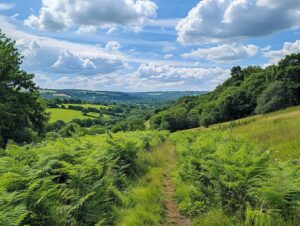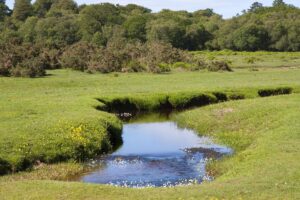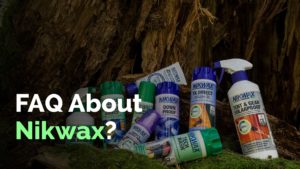

Vaibhav
- Categories: Advice
Are you planning a camping trip? It’s important to be aware of the potential dangers of poisonous plants that could be lurking in the wilderness.
Learn how to identify and avoid these toxic plants to prevent unpleasant encounters and stay safe during your outdoor adventures.
In this article, we will discuss the importance of recognizing poisonous plants, how to identify them, the most common ones to watch out for, symptoms of exposure, tips for avoiding contact, and what to do if you come into contact with them.
Stay informed and stay safe on your next camping excursion!
Key Takeaways:

- Know the common poisonous plants in the area to avoid them while camping.
- Look for warning signs, such as leaves of three and shiny leaves, to identify poisonous plants.
- In case of exposure, seek medical attention and wash the affected area immediately.
How to Identify Poisonous Plants?
Recognising toxic plants is essential for individuals engaging in outdoor activities like camping and hiking to reduce health risks and ensure a safe adventure in natural environments.
1. Know the Common Poisonous Plants in the Area
Understanding the common poisonous plants in the vicinity of the camping or hiking location can significantly mitigate the risk of inadvertent exposure.
Recognising plants like Aconite, known as Wolf’s Bane or Monkshood, is imperative due to its toxic alkaloid content. Additionally, plants such as Deadly Nightshade, Mistletoe, and Pokeweed are prevalent and can present substantial hazards if consumed.
Thorough research and familiarisation with these hazardous plants enable outdoor enthusiasts to enhance their safety and that of others during outdoor excursions.
A comprehensive comprehension of the distinctive features and potential dangers associated with these plant species give the power tos individuals to make well-informed choices and prevent potential accidents in natural settings.
2. Look for Warning Signs
Numerous toxic plants, including Poison Hemlock, Giant Hogweed, and Wild Parsnip, exhibit specific characteristics and indicators that aid in their identification. For instance, the stems of Poison Hemlock are characterised by the presence of purple spots, serving as a distinct warning sign.
Giant Hogweed is distinguishable by its large leaves and the sap it emits, both of which can provoke significant skin irritation. Similarly, Wild Parsnip is identifiable by its clusters of yellow blossoms. The ability to recognise these unique attributes can significantly help in preventing contact with these hazardous plant species.
3. Use a Plant Identification Guide
Utilising a plant identification guide, such as those provided by reputable sources like Blain’s Farm & Fleet or local resources within states such as Montana, presents an effective method for identifying and mitigating the risk posed by poisonous plants.
These guides furnish thorough information pertaining to the distinguishing characteristics of various plant species, facilitating the differentiation between benign flora and potentially hazardous varieties.
Particularly in regions like Montana, renowned for its rich botanical diversity, the availability of local resources proves advantageous, given their inclusion of plant species indigenous to the area.
During the selection process of a plant identification guide, it is recommended to opt for a resource that features clear photographs, detailed descriptions, and insights concerning the habitat and distribution of plants. This comprehensive approach not only enriches outdoor pursuits but also ensures a safer exploration of the natural environment.
What Are the Most Common Poisonous Plants Found While Camping?
When camping, it is probable to come across various common poisonous plants like Poison Ivy, Poison Oak, and Poison Sumac, each of which has the potential to induce substantial discomfort and health problems.
1. Poison Ivy
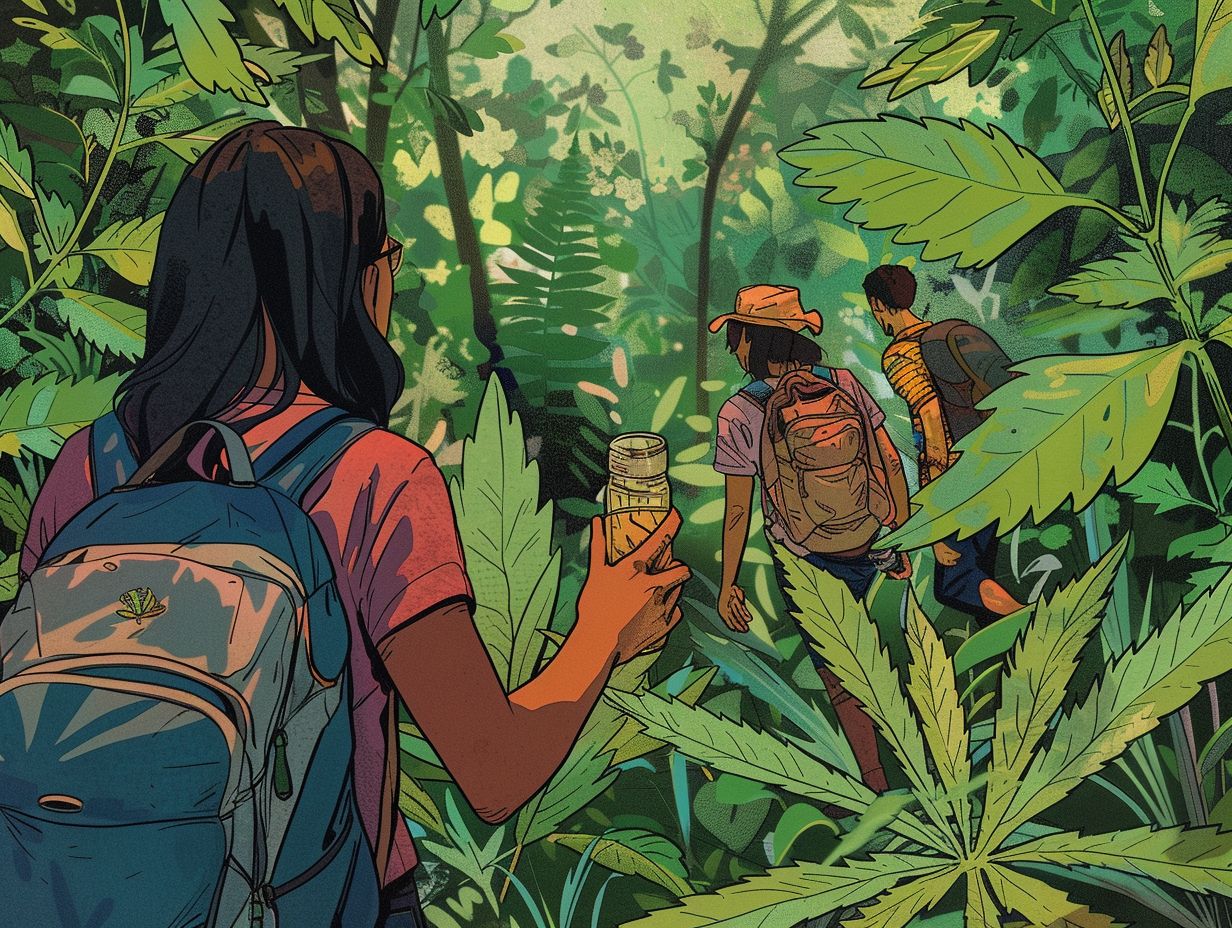
Poison Ivy is recognised as one of the most notorious poisonous plants, distinguished by its three-leaf clusters and the urushiol oil that triggers itchy and painful rashes upon contact.
It thrives in diverse environments, ranging from wooded areas to urban settings, posing a challenge for individuals seeking to avoid it. This plant exhibits a propensity for climbing trees, fences, or intermingling with other vegetation.
Notably, the glossy red leaves during spring and summer transition to a vivid red-orange hue in the autumn, rendering it conspicuously identifiable.
The urushiol oil, which is present in all parts of the Poison Ivy plant, is potent and can persist on surfaces for extended durations, heightening the likelihood of inadvertent exposure. In case of contact, promptly cleansing the affected area with soap and water can assist in minimising the severity of the resultant rash.
2. Poison Oak
Poison Oak, similar to Poison Ivy, contains urushiol, and is commonly found in wooded areas and in the vicinity of Blain’s Farm & Fleet stores.
Its distinguishing characteristics include clusters of three almond-shaped leaflets with smooth or slightly toothed edges. The leaves exhibit variations in colour throughout the year, transitioning from green in the spring to red and orange hues in the autumn.
Exposure to Poison Oak may lead to the development of a red, pruritic rash characterized by raised bumps and blisters. The presence of urushiol oil in Poison Oak is responsible for instigating skin irritation, eliciting an allergic response in the majority of individuals.
In case of exposure, it is imperative to cleanse the affected area promptly with soap and water to prevent further dispersion of the oil, and to seek medical attention should symptoms exacerbate.
3. Poison Sumac
Poison Sumac is a plant species that thrives in moist, swampy environments and is characterised by the presence of urushiol, a compound capable of inducing severe skin reactions upon contact.
Identification of Poison Sumac can be made based on several key features. These include clusters of smooth-edged leaflets arranged in pairs, with a single leaflet positioned at the end. The plant is further distinguished by its red stems and white berries.
Poison Sumac typically flourishes in damp, acidic soils, commonly inhabiting swamps, marshes, and other low-lying regions. Exposure to urushiol, a resinous oil contained within Poison Sumac, can lead to symptoms such as intense itching, redness, swelling, and the development of blisters on the skin.
Recognising Poison Sumac involves noting its unique leaf structure and taking precautions to prevent direct contact. This can be achieved through the utilisation of protective clothing, such as long sleeves, trousers, and gloves, when navigating potential environments where Poison Sumac may be present.
What Are the Symptoms of Poisonous Plant Exposure?
Exposure to toxic plants such as Poison Ivy, Poison Oak, and Poison Sumac can result in a range of symptoms, including skin irritation, respiratory difficulties, nausea, and vomiting, contingent upon the plant in question and the extent of exposure.
1. Skin Irritation
Skin irritation, commonly presenting as a rash, constitutes the predominant symptom following exposure to toxic plants such as Poison Ivy, attributable to their urushiol oil content. Urushiol, a viscous resin present in plants like Poison Ivy, Poison Oak, and Poison Sumac, serves as the primary instigator of the allergic reaction that culminates in rashes for many individuals.
The rash typically manifests as erythematous, pruritic, and vesicular skin. Some individuals may additionally experience oedema and a burning sensation.
Addressing the discomfort arising from exposure to these plants necessitates the implementation of rudimentary first aid procedures, including the prompt cleansing of the affected area with soap and water to eliminate the urushiol oil and impede the further dissemination of the rash.
2. Difficulty Breathing
Ingestion or inhalation of components of specific poisonous plants can result in respiratory distress, necessitating urgent medical intervention. These toxic plants have the potential to emit irritants and allergens that induce respiratory complications like dyspnoea, wheezing, and coughing.
Notable examples of such hazardous plants include poison ivy, oleander, and select mould species. Should an individual exhibit severe respiratory distress following contact with these plants, it is imperative to promptly seek emergency medical assistance.
Offering composed reassurance and ensuring the individual’s comfort while awaiting medical help can substantially influence their prognosis.
3. Nausea and Vomiting
Ingesting portions of certain toxic plants, such as poisonous berries or Aconite, can result in severe gastrointestinal distress, including nausea and vomiting.
These gastrointestinal manifestations are often concomitant with abdominal pain, diarrhoea, and on occasion, respiratory distress. Consumption of poisonous berries may induce intense abdominal cramping, potentially accompanied by haematemesis or melaena. Aconite toxicity, on the other hand, may manifest as paraesthesia in the oral cavity and extremities.
Should any of these symptoms manifest subsequent to the consumption of a potentially hazardous plant, it is imperative to promptly seek medical intervention. Contacting poison control or visiting the nearest emergency medical facility for immediate treatment and management is strongly advised.
How to Avoid Poisonous Plants While Camping?

Minimising the risk of exposure to toxic vegetation during camping necessitates adherence to several pragmatic measures. These include the utilisation of protective clothing, adherence to designated trails, and maintaining situational awareness to mitigate potential hazards.
1. Wear Protective Clothing
Utilising protective attire, such as long-sleeved shirts and trousers, can serve as a preventative measure against skin contact with poisonous plants during camping or hiking trips.
Opting for clothing fabricated from dense and tightly woven materials, such as nylon or polyester, can provide an additional barrier between one’s skin and potential irritants in the natural environment.
Selecting light-coloured garments can aid in identifying any plant residues that may have adhered to the clothing. It is recommended to wear gloves, preferably waterproof ones, to safeguard the hands from direct interaction with toxic plant oils. Additionally, remembering to tuck trousers into socks can further reduce the likelihood of exposure.
2. Stay on Designated Trails
Adhering to designated trails is a fundamental camping recommendation aimed at mitigating inadvertent encounters with poisonous plants, given that these paths are typically cleared and monitored to ensure safety.
Remaining on marked trails serves to benefit the environment by reducing human impact on fragile ecosystems. Deviating from these designated paths can result in erosion, vegetation destruction, and disruption of wildlife habitats.
By adhering to established trails, outdoor enthusiasts contribute to the preservation of the natural beauty and biodiversity of the surrounding area. Additionally, marked trails facilitate the location and assistance of hikers by rescue teams in emergency situations.
It is important to note that remaining on the trail not only safeguards personal safety but also demonstrates a respectful attitude towards the outdoor environment.
3. Be Aware of Your Surroundings
Maintaining situational awareness is essential for recognising and steering clear of toxic plants, thereby ensuring a secure and pleasant outdoor excursion. Additionally, through vigilant monitoring, campers can remain observant of potential wildlife encounters and shifts in weather patterns.
It is imperative to routinely survey the vicinity for natural threats such as unstable ground, falling debris, or abrupt variations in river water levels. Individuals should acquaint themselves with indigenous plant and animal species, particularly those that pose no harm upon contact or ingestion.
Moreover, the presence of a readily accessible first aid kit and familiarity with fundamental emergency procedures can significantly enhance one’s ability to manage unforeseen circumstances in remote wilderness settings.
What to Do If You Come into Contact with a Poisonous Plant?
When encountering a toxic plant, it is imperative to promptly take appropriate measures. These actions may include cleansing the impacted area, seeking medical assistance when required, and discarding any attire or equipment that has been tainted to mitigate additional exposure.
1. Wash the Affected Area Immediately
The immediate washing of the affected area with soap and water is essential in the removal of urushiol and mitigation of the rash’s severity caused by Poison Ivy, Poison Oak, or Poison Sumac.
It is imperative to utilise a soap that possesses the capability to effectively break down the oil-based urushiol. Seeking soaps specifically formulated to cut through oils, such as dish soap or specialised poison ivy soaps, is recommended.
During the cleansing process, it is important to thoroughly lather the impacted skin and subsequently rinse with lukewarm water. Prompt action following exposure is crucial in reducing the likelihood of the oil permeating deeper layers of the skin, which could lead to a more pronounced reaction.
2. Seek Medical Attention
It is imperative to seek medical attention if one experiences severe symptoms or an allergic reaction following contact with a poisonous plant. In such instances, professional medical care is essential to ensure a proper evaluation and treatment plan. Timely intervention by healthcare professionals can help alleviate symptoms, prevent complications, and facilitate the recovery process.
Treatment modalities for plant-induced allergic reactions may vary depending on the severity of the response. These treatments may encompass the use of medications such as antihistamines or corticosteroids to manage allergic reactions.
In more severe cases, interventions such as intravenous fluids or respiratory support may be necessary. Prompt medical attention is crucial to address any potential complications and promote a swift recovery from allergic reactions caused by plants.
3. Dispose of Any Contaminated Clothing or Gear

Proper disposal of any contaminated clothing or gear is imperative to prevent re-exposure to urushiol and mitigate the dissemination of the irritant. When handling items that have been in contact with poisonous plants like poison ivy or poison oak, it is essential to adhere to specific steps to ensure safe and effective disposal.
It is critical to don protective gloves and clothing to avoid direct skin contact. Utilise a plastic bag to meticulously position the contaminated items inside. Subsequently, thoroughly wash hands with soap and water.
During the cleaning of the contaminated items, employ warm water and detergent to eliminate any remnants of the irritant. Securely seal the bag and deposit it in a waste receptacle that is inaccessible to pets or children.
Frequently Asked Questions
What are some common poisonous plants found while camping?
Common poisonous plants found while camping include poison ivy, poison oak, poison sumac, stinging nettle, and wild parsnip.
How can I identify poisonous plants?
There are a few ways to identify poisonous plants while camping. Look for plants with three leaves, glossy or oily-looking leaves, or plants with an unpleasant smell. It’s also helpful to familiarise yourself with pictures of poisonous plants before your camping trip.
What should I do if I come in contact with a poisonous plant?
If you come in contact with a poisonous plant, quickly rinse the affected area with water. Avoid rubbing the area, as this can spread the oils and make the reaction worse. Apply an over-the-counter anti-itch cream or calamine lotion to relieve any itching or discomfort.
Can I still go camping if I have a severe reaction to a poisonous plant?
If you have a severe reaction to a poisonous plant, such as difficulty breathing or severe swelling, it’s best to avoid camping until the reaction has completely subsided. It’s also important to seek medical attention if your symptoms are severe.
Are there any natural remedies for treating a reaction to a poisonous plant?
While there are some natural remedies that claim to treat reactions to poisonous plants, there is no scientific evidence to support their effectiveness. It’s best to stick to proven methods, such as rinsing with water and using over-the-counter creams, if you come in contact with a poisonous plant while camping.
What are some ways to avoid coming in contact with poisonous plants while camping?
Some tips for avoiding contact with poisonous plants while camping include staying on designated trails, wearing long trousers and closed-toe shoes, and being cautious when handling firewood. It’s also important to teach children to recognise and avoid poisonous plants while camping.
Share:
By submitting your email address, you are agreeing to receive marketing emails from theexpertcamper.co.uk.
We’ll never share your email address and you can unsubscribe at any time. Privacy policy
Related Posts

A Seasonal Guide To Hiking In The Peak District
Are you ready to lace up your hiking boots and explore the stunning landscapes of the Peak District? This seasonal guide will take you through

Hiking Challenges Preparing For Your First Ultrahike
Are you ready to take your hiking adventures to the next level? Ultra-hiking offers a unique combination of physical and mental challenges, breathtaking scenery, and
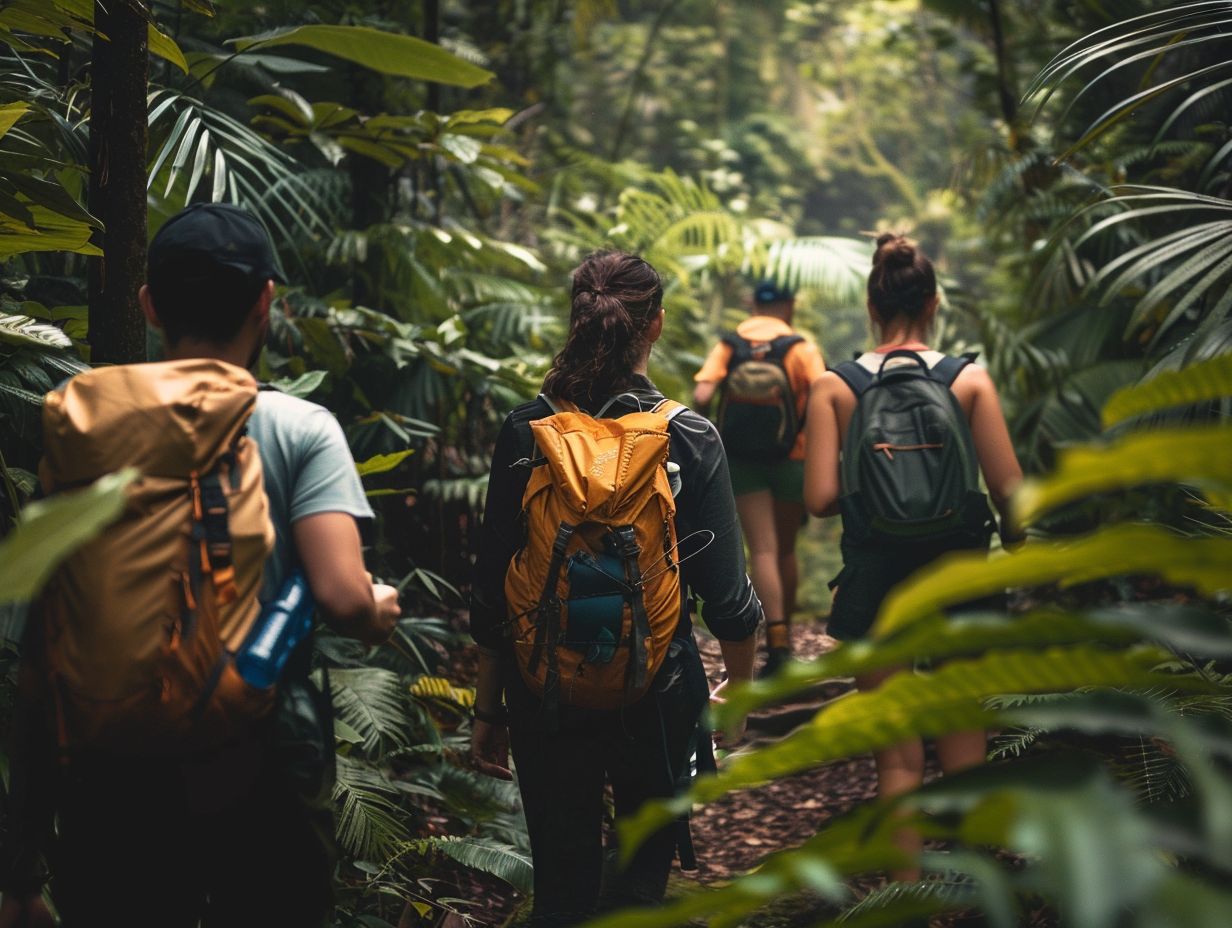
Ecofriendly Hiking Tips For Sustainable Adventures
Are you an outdoor enthusiast looking to minimise your impact on the environment while enjoying the great outdoors? Eco-friendly hiking is the perfect solution! We
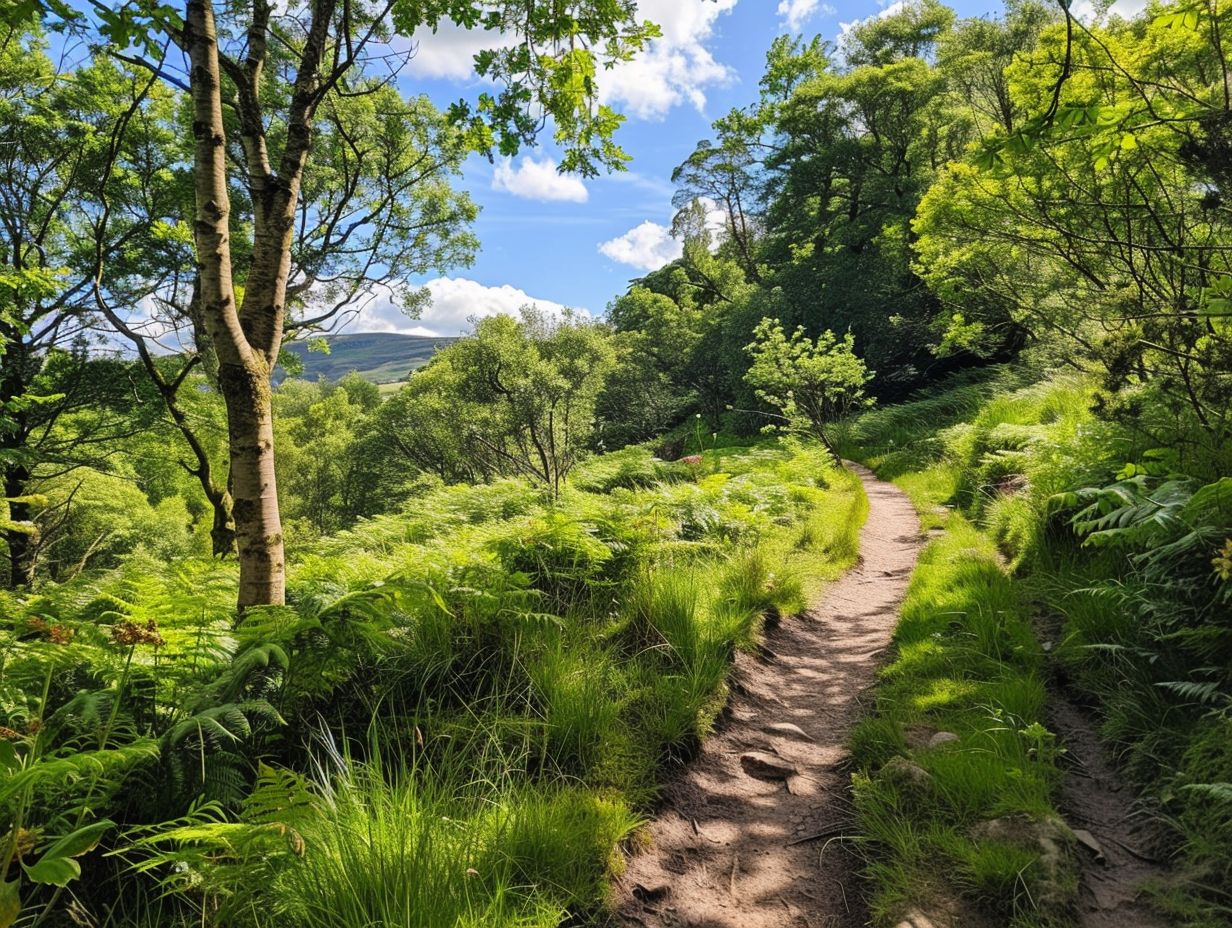
The Best Hiking Trails For Experiencing UK Wildlife
When exploring the picturesque hiking trails of the UK, you can expect to encounter a diverse array of wildlife. From majestic birds soaring overhead to

Wildflower Walks The Best Trails For Nature Lovers
Are you a nature lover looking to embark on a wildflower walk? Explore the best trails for wildflower walks, including [Trail Name 1], [Trail Name

















